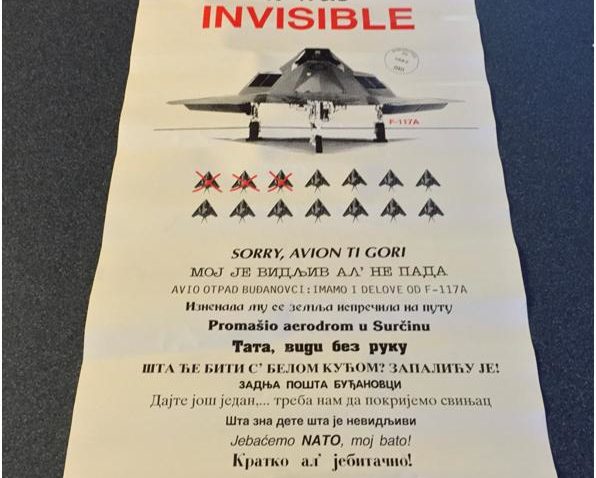This is part two of “The Balkans as Told by Propaganda”, part one of which can be found here. It is an attempt to portray the region in a way that is complex and multifaceted, with many actors fighting for control over the hearts and minds of the people that inhabit the land. The various posters show different messages that leaders used to try and to win over everyday people, from preying on anti-semitism to trying to unite the ideologically divided. It also shows what values people firmly believed in, and leaders tried to manipulate how those values in seeking to sway a population.

This anti-communist poster from Bulgaria is trying to explain the possible horrors of a Red Europe, such as the abuse by soldiers and police against citizens and the murder of priests. Anti-communist propaganda often focused on communists’ anti-religious beliefs to appeal to a large audience because of how closely connected Bulgarian culture is with Eastern Orthodox religion.

This pro-German poster from Serbia shows a Brit, a Jew, and a Soviet approaching a poor peasant and tricking him to fight the obviously superior German soldier in an attempt to discourage individuals from being ‘tricked’ into joining the partisans.

A gravely face, showing a demonic and grotesque communist, untrustworthy and unreliable in helping free the Serbians. The poster is anti-communist but it is unclear if the soldier is a Soviet or local partisan.

This poster tries to distance the Serbian people from the Soviet Union by emphasizing the diversity of the Soviets. The long historical, cultural, and linguistic ties between Serbs and Russians meant that the Nazi occupying government had to re-identify the Soviet Union in the minds of average Serbians who associated it with Russia and through that its role in Serbia’s liberation from Ottoman rule.

This poster is for the “Anti-Masonic gallery” which promises to tell the visitor the ‘truth’ about the Jews. Though the Nazis were able to target their own Jewish populations after coming to power, they had to put in effort to convince or coerce their allies and puppet states into cooperation with the extermination.


This is from the cover of a magazine produced by the youth wing of the Ustaše Party. It shows the cheery young girl marching. Unlike most of the other propaganda shown, this strives to show the good in the party which produced the propaganda, as opposed to negative propaganda to smear an enemy.

This poster was produced by the United Committee of South Slavic Americans in an attempt to boost support for Yugoslavia and its partisans overseas. Diasporas are vital for advocating on behalf of their native land and this case was no exception.

This Greek poster shows the people, backed up by family values and the church, fighting against a bloody communist force. It was produced for the 1956 elections. After WWII, Greece became an ideological battleground between the far left and far right which was caught up in the larger US and USSR conflict. The many years that the Greek left and right spent fighting each other explains the strength of both sides in today’s modern Greek politics.

(From: http://www.macedonian-heritage.gr/HellenicMacedonia/en/img_A4422a.html)
This poster originates from Canada, showing Macedonia proper as well its irredentist claims in Greece and Bulgaria. Though the exact date is unknown, it is from the latter half of the cold war, during which the doctrine of ‘brotherhood and unity’ was slowly losing its strength and nationalism was picking up support within the republics.

This poster is much more cheery than the rest, as it is not about politics. Instead, it focuses on promoting culture and education with the end goal of building up society, common within much of communist propaganda.

This poster is produced by Golden Dawn, a modern Greek far right party. The Greek, who resembles a classical marble sculpture, is fighting against the EU snake, which Golden Dawn blames for the modern economic troubles of Greece.

This poster from the 1999 Nato bombing campaign against Serbia is meant to boast to both the Serbian people and the international community about its military prowess. It is in reference to the March 1999 downing of the US F-117 stealth plane.

This leaflet was part of a media campaign to convince the Yugoslavian army to leave Kosovo. It was dropped on Yugoslav forces in order to try and demoralize them into disobeying orders, or even surrendering. It tries to appeal to nationalist Serbian sentiment within the army by blaming Milosevic’s leadership for Serbia’s losses. This went against Milosevic’s established image in Serbia as a defender of Serbia from an aggressive NATO campaign.

This poster is from the communist party of the Serbian majority region in Bosnia and Herzegovina, Srpska Republika or Republic of Srpska. It strangely uses imagery taken directly from the popular game Team Fortress 2. It has a page dedicated to more traditional communist propaganda, which can be found here.


Pingback: Milana Travis